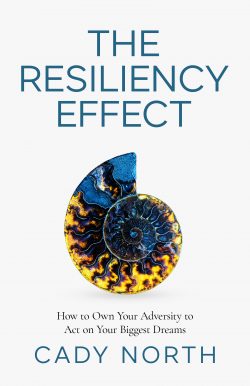One of the biggest challenges in acting on our big dreams is this: it’s a part of our human nature to focus on self-preservation. Our fear of making big changes has been explored in scientific studies about behavioral economics. William Samuelson and Richard Zeckhauser first proved the existence of a human “status quo bias” in experiments conducted in the late ’80s.
Participants were asked a series of hypothetical questions about how they would react given a set of facts. The study found that it was most common for participants to answer with the choices that involved doing nothing new or maintaining their current or previous decision. This bias to focus on the status quo is often observed in real life. Think about the last time you choose from three or four different health plans at work. Did you go with the default? The one you chose last year? If you’re like most consumers, you choose the plan you knew or were familiar with (i.e. the safe option) or the one that was the default or middle ground, which required less decision-making.
It takes extra work to discover the pros and cons of the new health care plan on the list. It also opens you up for the potential to “choose wrong.” The fear of loss is weighed more heavily by the mind than the potential for finding new gains by choosing a new plan. Weighing losses more than potential positives is also a human tendency observed in behavioral economics and known as the “loss aversion bias.”
The same thing happens with us and our dreams for our life. We can often name what our big dreams are to our friends or our mentors and advisors. However, we often immediately discount or let go of them because the “safe” thing to do is to maintain the status quo. It’s a path we know well. Adding something uncertain to the mix can create fear of loss or be demotivating. An easy response to acting on our dreams would be to say, “not now,” because that lets us hold on to the dream while letting us off the hook for not taking any action toward achieving the big goal.
It’s also much easier to focus outwardly on the external journey of “adulting:” paying our bills, moving through a career progression, buying a house, having a family, and generally “doing what we’re supposed to be doing.” This represents the status quo. Working on a new big project that fulfills a passion, taking a sabbatical, or changing careers to do something more fulfilling all represent a departure from the norm and the status quo. We avoid the hard work of trying to examine whether our “adulting” and keeping to the status quo in our life decisions hurts or helps us getting to our big dreams.
Yet, simply being aware that we all have a bias toward keeping the status quo or averting potential loss is not enough to fix the flaws in our decision-making.
The new year is always a time that we renew ourselves and take a look at new habits we want to create, changes we want to make, and look at goals we have for ourselves.
Instead of simply doing the work to state our goals, I love the idea of working through objections our brain will put in our path to keep us in the safe status quo.
I love doing this for myself and my business and I’ve found it’s a really great way to overcome objections.
This is the line of questioning which helps me to get unstuck. Not only do we think about what can get in our way in advance, but we also use these questions to begin to think about resources we might need from others.
Worksheet: 2021 Goal Setting Exercise
| What has changed for me during the last year? How has it changed my goals or plans? |
| What is one thing I can do to live more in sync with my purpose? |
| What might get in the way of me achieving this? |
| How will I work to accomplish my goal? |
| When will I work on that? |
| Who can I reach out to to learn more or to keep you on track? |
| How would it feel to make progress on this goal? |
What do you think? Will spending some time journaling on questions like this will help create more change for you this year? Who will you reach out to when sharing your progress?
This article is adapted from Chapter 4 of my book, The Resiliency Effect


